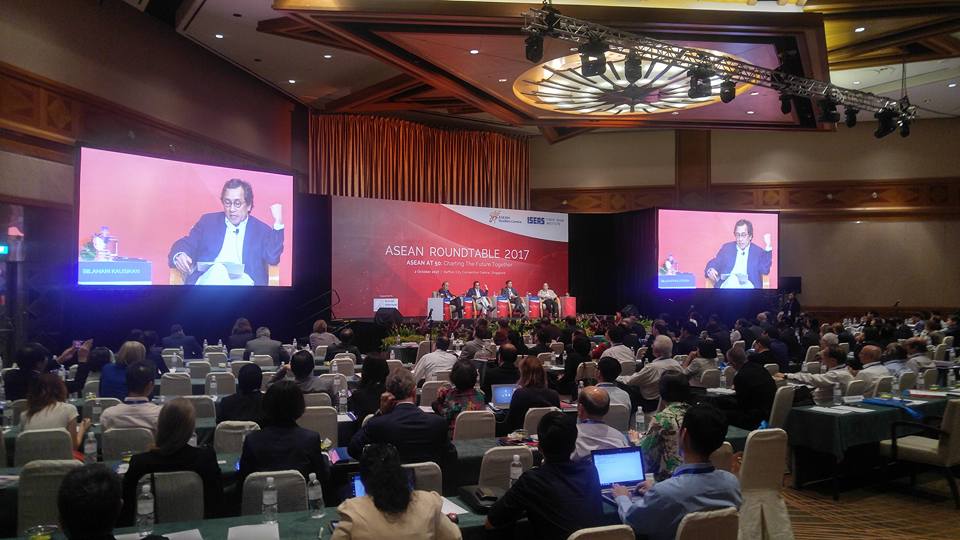Ambassador Bilahari Kausikan is currently Ambassador-at-Large at the Ministry of Foreign Affairs (MFA). Prior to this appointment, he was the Permanent Secretary of MFA from 2010 to 2013, and Second Permanent Secretary from 2001.
This is an edited excerpt of his remarks, Thinking About "ASEAN Centrality", given at a panel discussion at the ASEAN Roundtable 2017 organised by the ASEAN Studies Centre at ISEAS-Yusof Ishak Institute on Oct. 2.
The sub-headers were added by Mothership.sg.
"ASEAN Centrality" is a political construct
“ASEAN Centrality” is a term more often used than understood.
'ASEAN Centrality' is not a magic incantation whose mere invocation makes all our dreams come true. Nor is it an objective reality that exists irrespective of perceptions – 'ASEAN Centrality' is more akin to the sound of Berkeley’s falling tree than Johnson’s immovable rock. It is a political construct. If you do not recognise it, it does not exist.
Why do we and others recognise ‘ASEAN Centrality’? A political construct is inseparable from the purpose it is intended to serve. Framing the concept in these terms makes clear that it is contextual and contingent.
Consequently, two interrelated questions arise:
- First, since ASEAN is an inter-state organisation, how does the concept serve the national interests of ASEAN member states?; and
- Second, since Southeast Asia lies at the intersection of the interests of many major powers, how does the concept serve the national interests of these powers?
To describe something as ‘central’ means that, in one of the usages of the word, it is of first, primary, principal, crucial, dominant, foremost or vital importance – there are many other synonyms, and I have taken these adjectives at random from the OED’s definition.
Painful and difficult adjustments necessary: Rajaratnam
ASEAN’s fundamental and enduring purpose is to manage relations between its member states.
The main mechanisms to manage relations are necessarily bilateral not regional because one of the key principles by which ASEAN operates is non-interference, which is a corollary of decision-making by consensus. So ASEAN is clearly not central in this sense.
And yet it is difficult to believe that the Southeast Asia of 2017 would exist in its present condition without ASEAN. Southeast Asia is not without problems, but is nevertheless today generally at peace and prosperous. This is not to be taken for granted given the situation in Southeast Asia in 1967.
The apparent contradiction can be resolved if we recall what Singapore’s first Foreign Minister said when the Bangkok Declaration was signed 50 years ago.
“We must now think at two levels” Mr S Rajaratnam said, “We must think not only of our national interests but posit them against regional interests: that is a new way of thinking about our problems.”
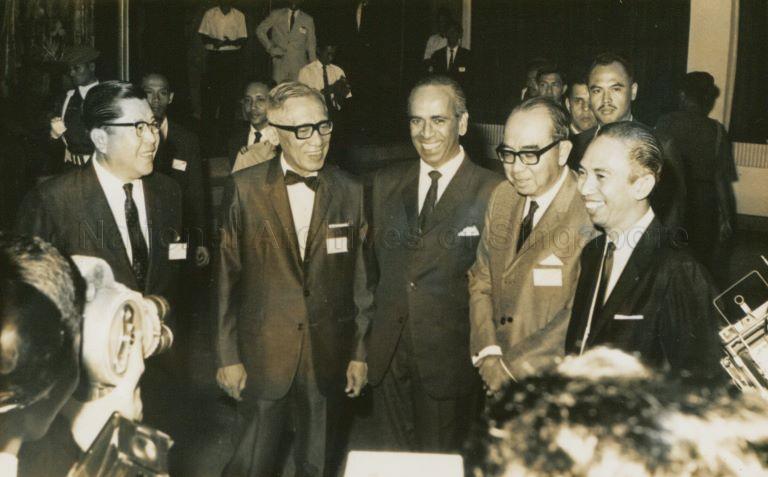
Founding members of Association of Southeast Asian Nations (ASEAN) in Bangkok, Thailand. From left: Foreign Ministers Thanat Khoman of Thailand, Narciso R Ramos of the Philippines, S Rajaratnam of Singapore, Tun Abdul Razak of Malaysia and Adam Malik of Indonesia. (Source: Ministry of Information and the Arts Collection, courtesy of National Archives of Singapore)
In different ways, all the five Foreign Ministers present at the signing of the Bangkok Declaration made essentially similar points, though none as directly as Mr Rajaratnam.
Mr Rajaratnam went on to sound a note of caution “And these are two different things and sometimes they can conflict... we must also accept the fact, if we are really serious about it, that regional existence means painful adjustments to those practices and thinking in our respective countries. We must make these painful and difficult adjustments. If we are not going to do that, then regionalism remains a utopia.”
How have we done?
The very fact that we are celebrating our 50th anniversary this year demonstrates that we have not done too badly at making the ‘painful and difficult adjustments’ that Mr Rajaratnam foresaw would be necessary.
[related_story]
The balance between national and regional interests
The record is of course not perfect, but perfection is to be found only in heaven. In the earthy calculations of their national interests, ASEAN has been central enough to member states, even if it has not always been of first, primary, principal, crucial, dominant, foremost or vital importance.
There are, however, other difficulties.
[quip float="pqleft"]The balance between national and regional interests varies from member state to member state and from issue to issue.[/quip]
While the regional element has almost never been completely absent from calculations of national interests – I can think of only one occasion, Cambodia in 2012, when the Chair entirely disregarded the regional interest -- member states have not always given the regional element the same weight when confronting the same problem. The balance between national and regional interests is not a stable equilibrium, but varies from member state to member state and from issue to issue.
I mentioned Cambodia in 2012 in particular because to date, it is the most egregious example of the disregard of the regional interest. But other members have also on occasion made their national interest more ‘central’ than the regional interest and blocked consensus, albeit less drastically.
Singapore, for instance, has made clear that we will not agree to Russian reservations to the SEANWFZ (Southeast Asian Nuclear-Weapon-Free Zone) Treaty because we see it as detrimental to our vital national interests, thus blocking the five official Nuclear Weapons States from signing on to it.
Whether the SEANWFZ Treaty was really in the regional interest is of course debatable. But no ASEAN member state other than Cambodia has before or since gone to the extreme of blocking an entire Joint Statement because of disagreement on one issue.
Preserving autonomy amidst great power competition
That ASEAN does not always reach consensus should not be surprising. ASEAN member states are politically, economically and sociologically extremely diverse and thus inevitably define national interests differently. More fundamentally, ASEAN has no supranational pretensions. We do not pretend to have a common foreign or security policy or futilely deny the reality of nationalism. Instead we harness nationalism in the cause of regionalism.
To quote Mr Rajaratnam again, from a speech he made in 1970, “Regionalism is … a means of protecting and consolidating national interests.”
Or to resurrect vocabulary that has fallen into disuse in the ASEAN lexicon, national resilience enhances regional resilience, and regional resilience enhances national resilience.
Not denying the reality of nationalism; harnessing and not brushing aside or trying to suppress nationalism, is the essential reason ASEAN has survived where earlier experiments in Southeast Asian regionalism floundered.
Using nationalism is crucial because as the strategic link, almost the midpoint – which is another meaning of ‘central’ -- between the Pacific and Indian Oceans, Southeast Asia cannot escape great power competition. The states of the region are at continual risk of falling prey to their machinations.
[quip float="pqleft"]The necessary price of regionalism based on the reality of diverse national interests is tolerating a certain degree of incoherence.[/quip]
Whatever their other differences, the one value all nationalists hold in common, is autonomy. By managing relations between its member states, ASEAN is the vehicle whereby its members try to preserve autonomy amidst great power competition.
The record is again far from perfect, but I think member states would have been far worse off; would not have weathered all the tumultuous vicissitudes of the Cold War -- which in Southeast Asia was hot -- Sino-Soviet proxy conflict, insurgency and subversion, as successfully, without ASEAN.
But it must be conceded that the downside -- the necessary price -- of regionalism based on the reality of diverse national interests is tolerating a certain degree of incoherence. This is not always a bad thing.
ASEAN suits the interests of major powers
How other powers regard ‘ASEAN Centrality’ also varies from issue to issue. At the ASEAN-China Special Foreign Minister’s meeting held in Kunming in June 2016, a senior Chinese official bluntly told the ASEAN Foreign Ministers that on the SCS (South China Sea), ASEAN was not central.
This was an unusually direct, but not entirely exceptional, example of a general attitude. To the US and the EU, for example, ASEAN was clearly not ‘central’ to their approach towards Myanmar under military rule, although they were more polite in making this known.
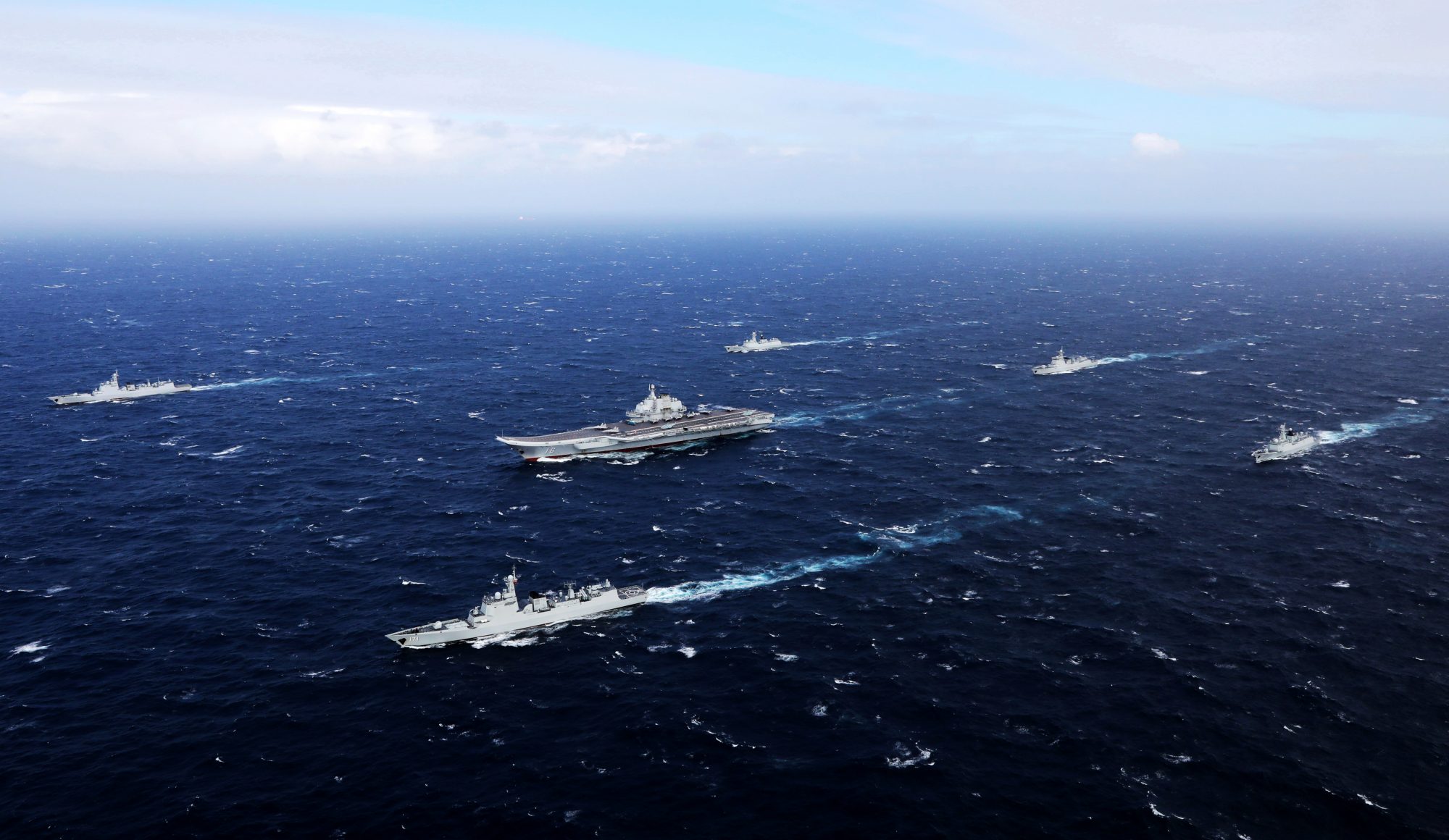 Chinese aircraft carrier fleet operates during a training at South China Sea on December, 2016 in South China Sea, China. Chinese aircraft carrier fleet carrying Shenyang J-15 fighters and carrier-based helicopters trained at South China Sea from late December. (Photo by VCG)
Chinese aircraft carrier fleet operates during a training at South China Sea on December, 2016 in South China Sea, China. Chinese aircraft carrier fleet carrying Shenyang J-15 fighters and carrier-based helicopters trained at South China Sea from late December. (Photo by VCG)
All the major powers profess respect for ‘ASEAN Centrality’. Do they really mean it? Yes and no. Usually left unsaid, but always present, is the qualification: so long as it suits their interests.
[quip float="pqleft"]This makes ASEAN an occasionally useful instrument to advance their (major powers') national interests, while ensuring that ASEAN cannot block their most vital designs.[/quip]
ASEAN is fond of reminding others that we have a combined population of more than 600 million, larger than the EU or North America, and that our combined GDP makes us the 6th or 7th largest economy globally. But this describes potentiality not actuality. The potential will be realised only if we achieve our goal of an economic community that encompasses a common market and a common production platform. This will require political will and hard work.
If the major powers consider ASEAN ‘central’ it is not because of our strategic weight, but because of our relative strategic weakness. This makes ASEAN an occasionally useful instrument to advance their national interests, while ensuring that ASEAN cannot block their most vital designs.
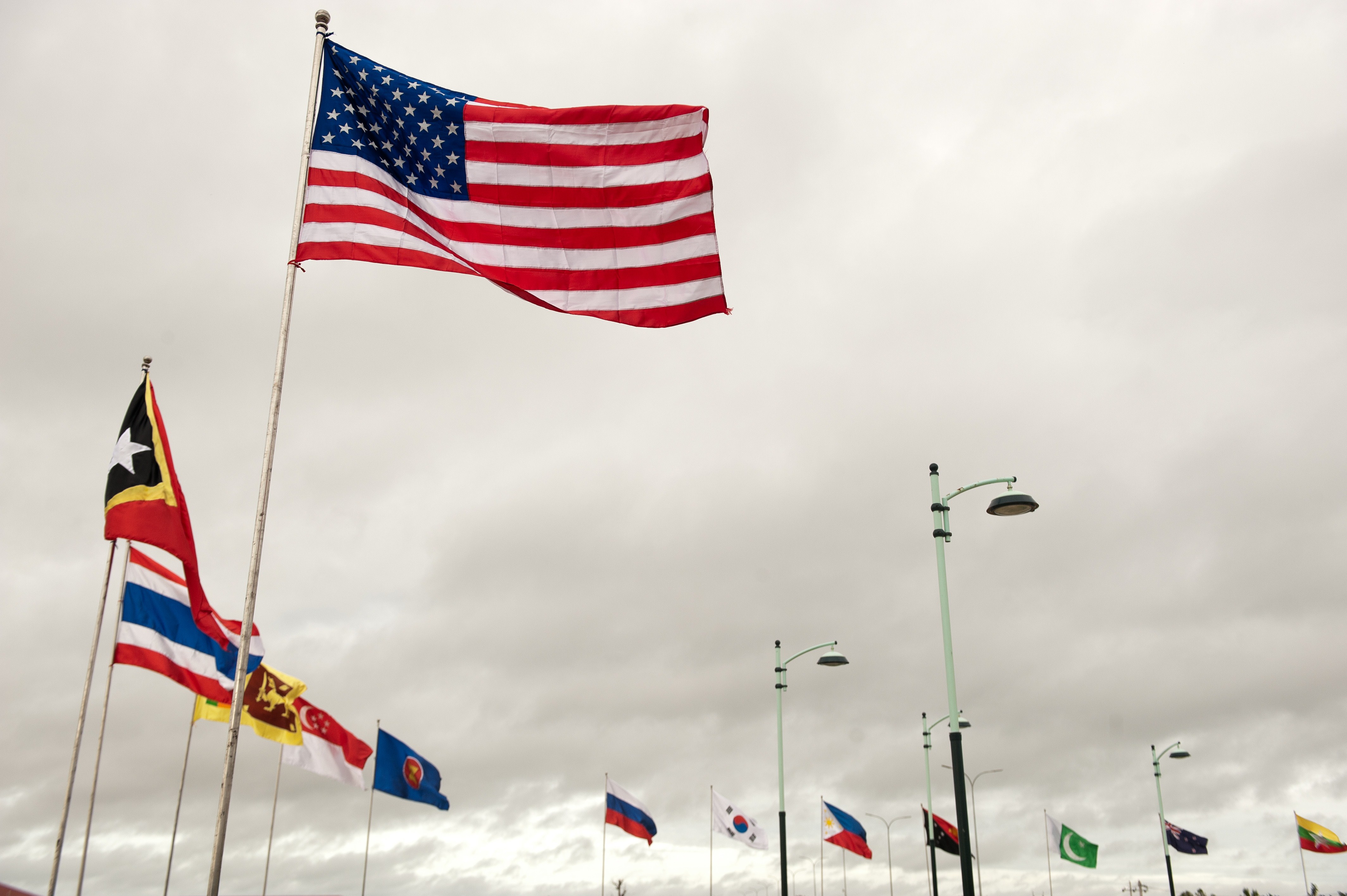 The US national flag (top L) flies next to flags of the ASEAN related countries' flags outside the Myanmar International Convention Center (MICC) which is the venue for the 47th ASEAN Foreign Ministers' Meeting in Naypyidaw on August 8, 2014. (NICOLAS ASFOURI/AFP/Getty Images)
The US national flag (top L) flies next to flags of the ASEAN related countries' flags outside the Myanmar International Convention Center (MICC) which is the venue for the 47th ASEAN Foreign Ministers' Meeting in Naypyidaw on August 8, 2014. (NICOLAS ASFOURI/AFP/Getty Images)
This is a harsh reality but not an unusual reality. It is formalised in the veto powers of the five Permanent Members of the UN Security Council. It is the reason the UN survived whereas its predecessor, the League of Nations, did not. It is the reason why the major powers support ASEAN-created forums such as the ARF (ASEAN Regional Forum), the ADMM (ASEAN Defence Ministers' Meeting) Plus and the EAS (East Asia Summit). It is the reason they accept ASEAN-defined regional norms such as the Treaty of Amity and Cooperation. In short, it is the reason why ASEAN is ‘central’.
ASEAN suits the interests of the major powers. I do not think any major power wants to destroy or divide ASEAN. Of course, ASEAN would suit their interests even better if they could capture ASEAN as an instrument of their foreign policy; united and ‘central’ in their interests.
[quip float="pqleft"]The very diversity of the national interests of member states makes ASEAN difficult to capture in its entirety. Incoherence is not always a bad thing[/quip]
And they have indeed tried to capture ASEAN; tried but failed. The two issues I earlier mentioned -- the SCS (South China Sea) and Myanmar -- are examples.
After 2012, ASEAN has maintained a minimal consensus on the SCS that does not entirely satisfy either the US or China, or for that matter, does not entirely satisfy all ASEAN members. Western powers repeatedly tried to pressure or persuade ASEAN to adopt their approach towards military-ruled Myanmar. Some ASEAN members were tempted to adopt at least some elements of the Western approach, but could not command consensus.
The very diversity of the national interests of member states makes ASEAN difficult to capture in its entirety. That is why I earlier said incoherence is not always a bad thing.
"ASEAN Centrality" is not one thing but many things
Paradoxically the limitations to ‘ASEAN Centrality’ keeps ASEAN ‘central’; that is to say, at least minimally autonomous. Throughout its history, ASEAN has frustrated all major powers and continually slipped from their grasp. ASEAN does not always get its way, but neither have the major powers entirely had their way either. We have never been without agency.
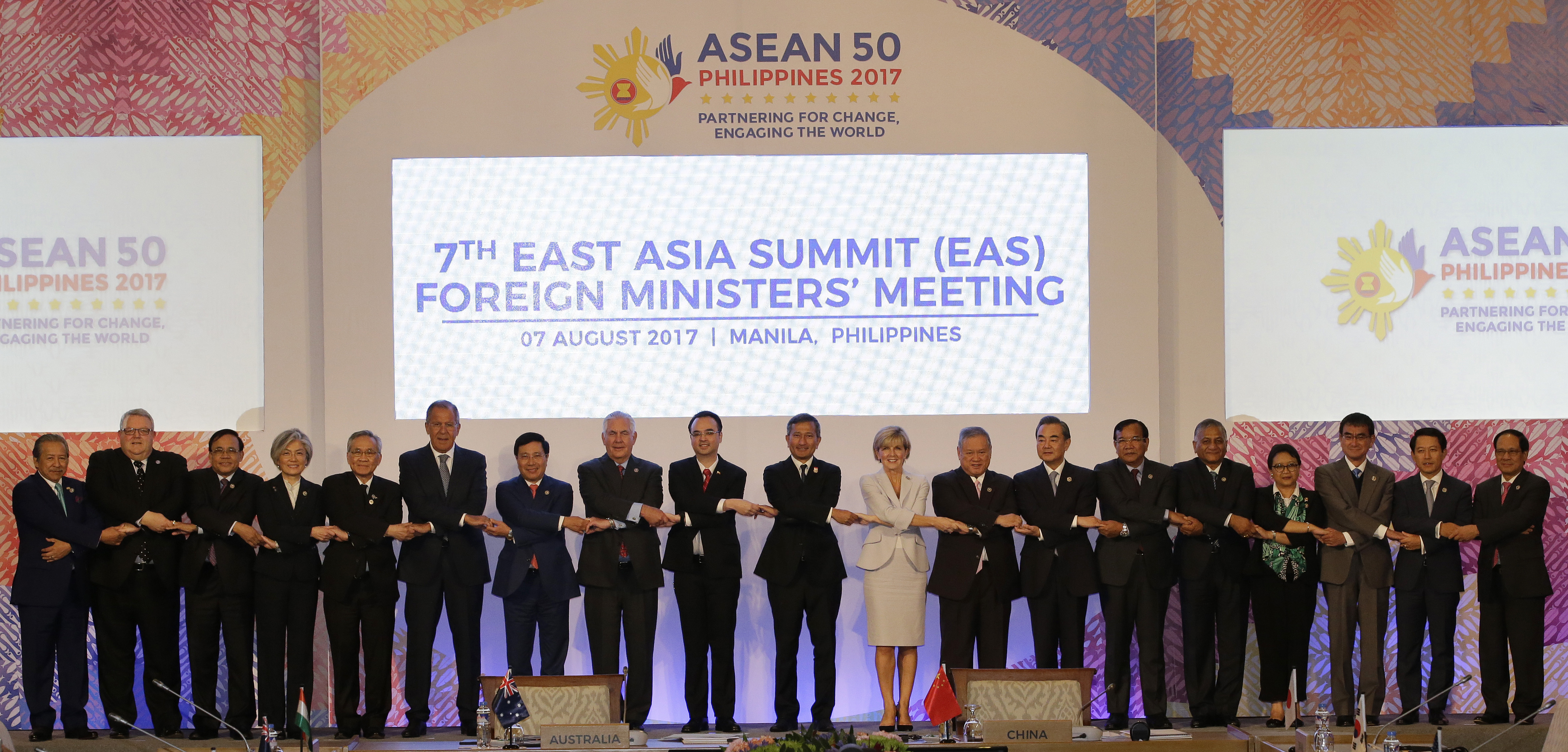 Foreign ministers from Southeast Asia and their dialogue partners link arms during the group photo at the start of the 7th East Asia Summit Foreign Ministers' Meeting and its dialogue partners on August 7, 2017. (AARON FAVILA/AFP/Getty Images)
Foreign ministers from Southeast Asia and their dialogue partners link arms during the group photo at the start of the 7th East Asia Summit Foreign Ministers' Meeting and its dialogue partners on August 7, 2017. (AARON FAVILA/AFP/Getty Images)
Can ASEAN continue to remain ‘central’ in this modest sense?
The post-Cold War regional environment has become more fluid as the US and China -- neither natural partners nor unqualified adversaries -- grope towards a new modus vivendi. The US-China balance will eventually become more symmetrical. But there is no sign that the US or its East Asian allies will withdraw from Southeast Asia. The very dynamism of developments gives ASEAN the possibility of manoeuvre to remain ‘central’. Whether we will be clever and nimble enough to take advantage of the opportunities is of course another matter.
[quip float="pqleft"]Centrality is a supple, shape-shifting concept, capable of continual adaptation.[/quip]
The greatest challenges are internal not external. The domestic political environments of several ASEAN members have become more complicated, complicating their calculations of interests. With expansion, it has become more difficult to reach consensus; the ‘ASEAN Way’ has become more rigid. Not every new member has internalised the need for balance between national and regional interests as did the original members.
Great power competition in Southeast Asia is as much -- perhaps even more -- psychological as material: a mind-game. The key point I have tried to make is that ‘ASEAN Centrality’ is not one thing but many things. Centrality is a supple, shape-shifting concept, capable of continual adaptation. ASEAN will lose ‘centrality’ only if we lose confidence in our own ability to make the painful and difficult adjustments that will continue to be necessary.
Cover photo from ISEAS Yusof-Ishak Institute Facebook
If you like what you read, follow us on Facebook, Instagram, Twitter and Telegram to get the latest updates.
